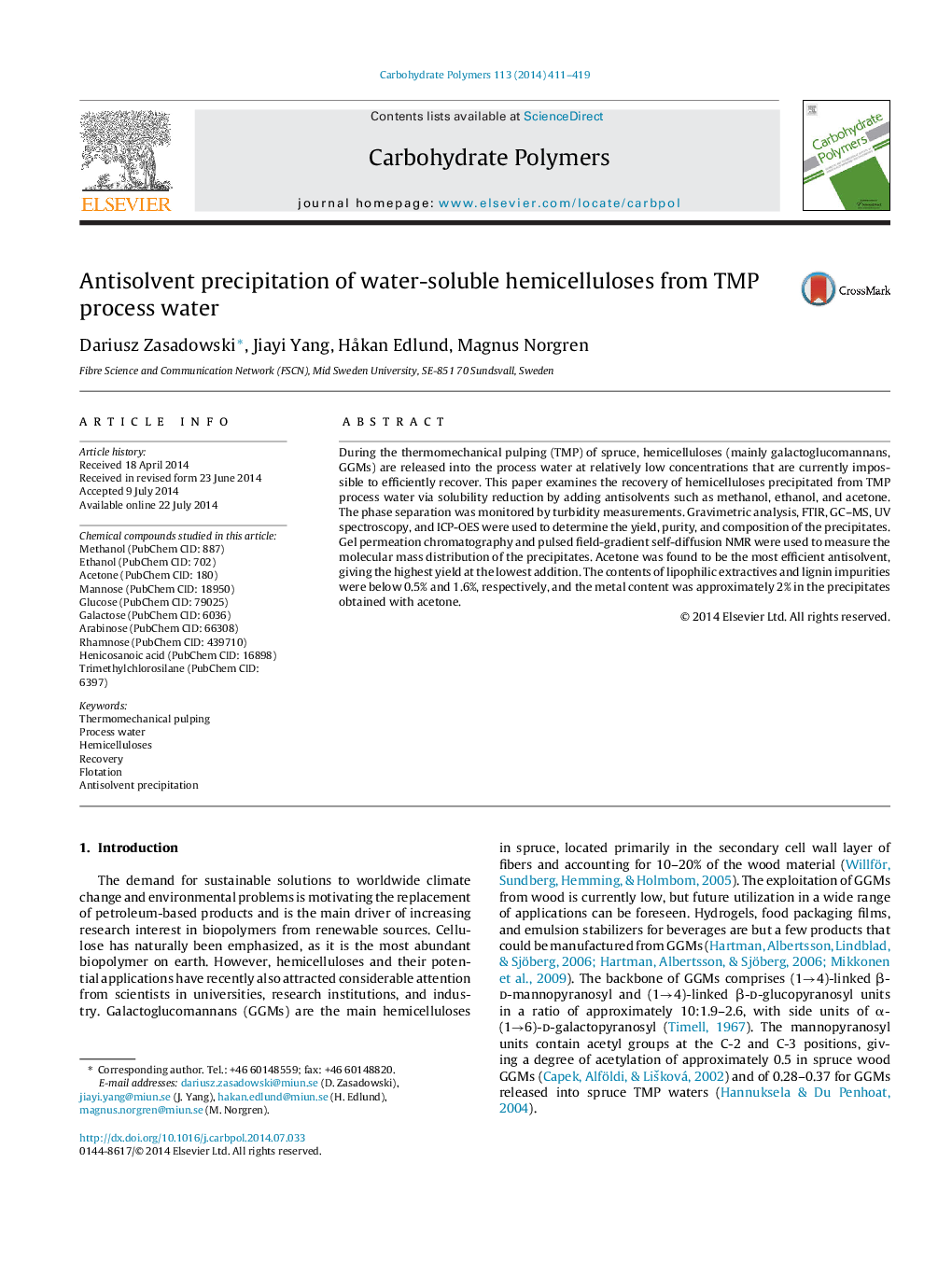| Article ID | Journal | Published Year | Pages | File Type |
|---|---|---|---|---|
| 7791084 | Carbohydrate Polymers | 2014 | 9 Pages |
Abstract
During the thermomechanical pulping (TMP) of spruce, hemicelluloses (mainly galactoglucomannans, GGMs) are released into the process water at relatively low concentrations that are currently impossible to efficiently recover. This paper examines the recovery of hemicelluloses precipitated from TMP process water via solubility reduction by adding antisolvents such as methanol, ethanol, and acetone. The phase separation was monitored by turbidity measurements. Gravimetric analysis, FTIR, GC-MS, UV spectroscopy, and ICP-OES were used to determine the yield, purity, and composition of the precipitates. Gel permeation chromatography and pulsed field-gradient self-diffusion NMR were used to measure the molecular mass distribution of the precipitates. Acetone was found to be the most efficient antisolvent, giving the highest yield at the lowest addition. The contents of lipophilic extractives and lignin impurities were below 0.5% and 1.6%, respectively, and the metal content was approximately 2% in the precipitates obtained with acetone.
Keywords
Related Topics
Physical Sciences and Engineering
Chemistry
Organic Chemistry
Authors
Dariusz Zasadowski, Jiayi Yang, HÃ¥kan Edlund, Magnus Norgren,
